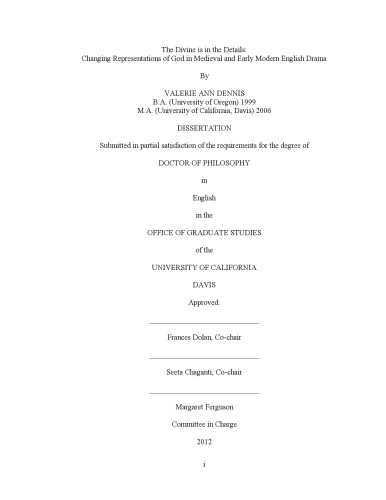Product desciption
The Divine Is In The Details Changing Representations Of God In Medieval And Early Modern English Drama Valerie Ann Dennis by Valerie Ann Dennis instant download after payment.
Medieval drama frequently included God and Christ as characters, but after the English Reformation, direct representations of the Deity became less common, disappearing from the public stage by the end of the sixteenth century. God's absence from the stage is one of the major differences between medieval and early modern English drama, often viewed by critics as evidence of a process of secularization. Challenging the secularization theory, this project argues that post-Reformation plays engaged in theological debates, such as those between Arminianism and Calvinism, through indirect depictions of the Deity. Post-Reformation playwrights used personified aspects of God, demons and their pacts, and marriage covenants to stand in for the Deity and the Christian covenant. These indirect depictions of God protected playwrights and players from censorship and punition. Furthermore, the playwrights' use of limited, abstract personifications or unreliable characters to convey ambiguous information about God's role in human affairs placed responsibility on audience members to draw their own conclusions about the Deity and Christianity.
To demonstrate the changes and continuities between early modern and medieval depictions of God, this project compares the divine characters represented in the Chester, N-Town, Wakefield, and York medieval mystery plays with the problematic depiction of Christ in John Bale's post-Reformation The Temptation of Our Lord, exposing the difficulties Bale encountered and suggesting why post-Reformation playwrights abandoned direct depictions of the Deity. Furthermore, a comparison of an array of medieval and early modern morality plays reveals that post-Reformation playwrights borrowed and adapted medieval playwrights' use of personification allegories to depict attributes of God, conveying a fractured view of the Deity. Finally, this project examines the use of demons and demonic pacts to invoke God and Christianity in both tragedies and comedies, including Marlowe's Doctor Faustus , Barnes' The Devil's Charter, Rowley, Dekker and Ford's The Witch of Edmonton, Greene's Friar Bacon and Friar Bungay, The Merry Devil of Edmonton, Jonson's The Devil Is an Ass, and Davenport's A New Trick to Cheat the Devil.


